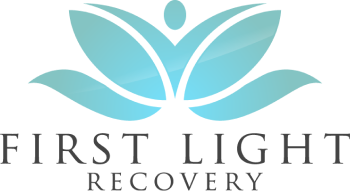Benefits of Professional Treatment
When seeking out quality treatment for PTSD, awareness of your coverage options can significantly enhance your experience. Understanding financial support available through insurance is essential for navigating treatment effectively.
Mental Health Support Coverage
Mental health services, including PTSD treatment, are classified as essential health benefits under the Affordable Care Act. This legislation ensures that pre-existing mental and behavioral health conditions are covered with no spending limits on treatment (Healthcare.gov).
The benefits afforded by professional treatment enable individuals to access necessary care without immediate financial strain. Here’s a simple overview of what mental health coverage typically includes:
| Service Type | Coverage Details |
|---|---|
| Therapy Sessions | Frequently covered; varies by plan |
| Medication Management | Typically included |
| Inpatient Treatment | Covered under many plans |
| Emergency Services | Often covered; must check specifics |
Your insurance provider can give you a detailed outline of your specific coverage for PTSD treatment near you.
Medicaid and CHIP Coverage
For those eligible, Medicaid and the Children’s Health Insurance Program (CHIP) offer important financial assistance for mental health care, including PTSD treatment. Coverage varies by state, impacting the type and amount of services provided.
Here’s a quick look at what you might expect:
| Coverage Type | Details |
|---|---|
| Service Availability | Varies by state |
| Mental Health Treatment | Some coverage for drug and alcohol use |
| Co-Pay Requirements | May vary based on income and state |
It’s vital to connect with local Medicaid offices or your healthcare provider to understand the exact coverage you might receive for PTSD treatment, ensuring you or your loved ones receive the help needed.
For those looking beyond financial constraints, exploring options like residential mental health treatment can also be a beneficial route to take.
Seeking PTSD Treatment Options
When searching for effective mental health support, understanding available treatment options is essential. For those dealing with PTSD, seeking proper treatment can lead to significant improvements in quality of life. Here, you’ll find an overview of inpatient treatment facilities and the criteria for diagnosing PTSD.
Inpatient Treatment Facilities
Inpatient treatment facilities provide specialized care for individuals experiencing severe symptoms of PTSD. These facilities, such as Mount Carmel Behavioral Health, focus on delivering personalized care while addressing the complex needs of individuals. Inpatient programs typically last between five to seven days, allowing for the stabilization of symptoms before transitioning to a less intensive level of care.
Unpacking the benefits of inpatient settings, these environments offer 24/7 support and access to a variety of therapeutic modalities. You can expect the following from quality inpatient PTSD treatment:
| Treatment Aspect | Details |
|---|---|
| Duration | Typically 5-7 days |
| Environment | Structured and safe facility |
| Support | Access to trained mental health professionals |
| Therapy Types | Individual, group, and evidence-based therapies |
| Focus | Stabilization and transition to ongoing care |
Those interested in residential options can explore links for inpatient PTSD rehab or long-term mental health facilities to find the best fit for their needs.
Diagnosis and Criteria
The diagnosis of PTSD is established using the DSM-5, which outlines the signs, symptoms, effects, and necessary criteria. Understanding these criteria is important for identifying PTSD and ensuring that you or your loved one receives the appropriate treatment.
Common symptoms that may indicate PTSD include:
| Symptom Category | Examples |
|---|---|
| Avoidance | Steering clear of reminders of the trauma |
| Cognitive Changes | Persistent negative thoughts or altered mood |
| Reactivity | Heightened sensitivity or hypervigilance |
When evaluating for PTSD, professionals assess not only the symptoms but also their frequency and level of distress experienced by the individual. Many facilities, such as the Ohio State University Wexner Medical Center, offer specialized programs, including trauma reduction initiatives designed for various demographics, such as veterans and survivors of sexual assault.
Finding treatment options is just the beginning. Prioritizing mental health through evidence-based care is essential for recovery. If you are searching for ptsd treatment near me, consider reaching out to local facilities that offer comprehensive services to address your needs.
Treatment Approaches for PTSD
Evidence-Based Treatment Importance
When seeking effective solutions for PTSD, evidence-based treatments play a vital role. Engaging in therapy that is grounded in scientific research ensures you have the best chance for recovery. For instance, over 80% of individuals completing evidence-based psychotherapies for PTSD report significant improvement in their symptoms, with more than half no longer meeting the criteria for PTSD diagnosis.
These therapies often include psychotherapy interventions specifically designed for PTSD. Studies show that these targeted approaches have been highly effective, leading to substantial improvements in symptoms for over 80% of participants. Not only is it essential to select effective treatment modalities, but supplementing them with supportive networks can enhance recovery outcomes. Peer support groups can provide essential emotional support, allowing individuals to connect with others who have experienced similar traumas (VA).
| Treatment Type | Improvement Rate (%) | No Longer Meeting PTSD Criteria (%) |
|---|---|---|
| Evidence-Based Psychotherapy | 80 | 50 |
| Peer Support (Supplementary) | Varies | Not a replacement for professional help |
Role of Peer Support Groups
Peer support groups offer a unique approach to healing for those dealing with PTSD. While they provide valuable emotional support and a sense of community, it’s crucial to remember that they are not replacements for professional treatment. These groups allow individuals to share their experiences and coping strategies, which can help alleviate feelings of isolation and validate their experiences.
By connecting with others who have faced similar challenges, you may find encouragement and insight that can aid your healing process. However, joining a peer support group should complement evidence-based therapies rather than serve as the sole treatment option. If post-trauma issues continue over time, professional intervention is critical.
Through First Light Recovery and other specialized facilities, you can access a variety of treatment options, including evidence-based therapies and peer support frameworks. For further details or to explore treatment options, find ptsd treatment near me. Remember, prioritizing both professional help and supportive networks can significantly improve your journey towards better mental health.
Resources for PTSD Assistance
Finding the right support for PTSD can make a significant difference in your mental health journey. There are various resources available, particularly for veterans and through university medical center programs, which can help you navigate treatment options effectively.
Veteran Resources
Veterans can access specific resources tailored to address PTSD concerns. The U.S. Department of Veterans Affairs (VA) provides resources such as the PTSD Coach, which offers information on PTSD symptoms and treatments. Additional support tools include a comprehensive guide to understanding PTSD and various mobile apps that promote self-help and connection. Veterans, family members, and support persons can also utilize the PTSD Information Voicemail and email for inquiries and assistance (VA).
Key Veteran Resources:
| Resource | Description |
|---|---|
| PTSD Coach | Mobile app providing information on PTSD symptoms and treatments. |
| Support Guides | Comprehensive guides for understanding PTSD and its management. |
| Peer Support | Community connection to share experiences and support (VA). |
University Medical Center Programs
University medical centers often have specialized programs to assist individuals with PTSD. For example, the Ohio State University Wexner Medical Center offers evidence-based treatments and tailored programs for various groups, including veterans, sexual assault survivors, and first responders. Programs like the Suicide and Trauma Reduction Initiative (STRIVE) and Stress, Trauma, and Resilience (STAR) focus on providing specialized trauma care.
These programs typically employ psychotherapy interventions that have shown high effectiveness, with studies indicating over 80% of patients experience significant symptom improvement. Moreover, more than half of those treated may no longer meet the diagnostic criteria for PTSD following successful therapy completion.
Examples of University Medical Center Programs:
| Program | Target Audience | Focus Area |
|---|---|---|
| STRIVE | Veterans and other trauma survivors | Suicide prevention and trauma care |
| STAR | First responders and sexual assault survivors | Stress and trauma resilience training |
For further assistance with PTSD, you can look for programs and resources in your area. Locate facilities and services by searching for ptsd treatment near me to explore what options are available for you or your loved ones.
The Impact of Untreated PTSD
Short-Term Effects
Untreated PTSD can manifest through various short-term effects that significantly disrupt daily life. Individuals may experience irritability, angry outbursts, self-destructive behavior, and issues with concentration. Additionally, sleep disturbances are common, often resulting in fatigue and diminished cognitive function throughout the day. Here’s a closer look at some of these immediate impacts:
| Short-Term Effects | Description |
|---|---|
| Irritability | Increased agitation and difficulty managing emotions. |
| Angry Outbursts | Sudden, intense episodes of anger often disproportionate to the trigger. |
| Self-Destructive Behavior | Engaging in activities that may harm oneself physically or emotionally. |
| Concentration Issues | Difficulty focusing on tasks, impacting work or relationships. |
| Sleep Disturbances | Trouble falling or staying asleep, leading to exhaustion. |
It is also essential to acknowledge that many individuals with PTSD may develop co-occurring disorders, such as depression or anxiety, further complicating their mental health landscape.
Long-Term Consequences
The long-term consequences of untreated PTSD can be severe and far-reaching. Symptoms may evolve into chronic conditions, impacting an individual’s quality of life. The potential long-term effects include chronic pain, heart disease, substance abuse, and even suicide attempts. Here are some key aspects of the long-term impact of PTSD:
| Long-Term Consequences | Description |
|---|---|
| Chronic Pain | Persistent physical pain often associated with stress and trauma. |
| Heart Disease | Increased risk of cardiovascular issues due to sustained stress levels. |
| Substance Abuse | Using drugs or alcohol as a coping mechanism for emotional pain. |
| Suicide Attempts | Higher rates of suicidal thoughts and attempts among untreated individuals. |
| Decreased Quality of Life | Overall decline in happiness, health, and ability to maintain relationships. |
As PTSD often co-occurs with other mental health conditions, it is vital for individuals suffering to seek comprehensive assessment and treatment options. Delays in seeking help can lead to worsening symptoms and complications (Ohio State University Wexner Medical Center). If you’re looking for effective solutions, consider exploring options for PTSD treatment near me to ensure you or your loved one receives the appropriate care for recovery.
Certified Trauma Professionals
Engaging with certified trauma professionals is essential for effective PTSD treatment. These professionals possess specialized training and qualifications to help you or your loved ones navigate the complexities of trauma recovery.
Certification Requirements
To become a Certified Clinical Trauma Professional (CCTP), applicants must adhere to specific certification criteria. These include:
- Educational Background: A minimum of a master’s degree in a relevant field.
- Licensing: A valid state or national license that permits independent practice.
- Training and Supervision: Completion of training hours and supervision requirements as mandated for independent practice.
- Continuing Education: At least 12 clock hours of continuing education training in trauma assessment and treatment topics is mandatory. This training must be sourced from approved providers within three years prior to the certification application.
To maintain CCTP certification, professionals must renew their certification after the initial year, with varying renewal durations available (1, 2, or 3 years). Each option comes with specific continuing education hour requirements.
Notable Trauma Specialists
Many specialists stand out in the field of trauma treatment, providing invaluable resources and support. Here are a couple of notable figures:
| Name | Qualifications | Specialization |
|---|---|---|
| Linda Curran | BCPC, LPC, CACD, CCDPD, EMDR-C | Focus on PTSD in adolescents and adults; workshops on psychological trauma. |
| Janina Fisher, PhD | Licensed Clinical Psychologist | Integrates neurobiological research into trauma treatment; known for national and international lectures. (Evergreen Certifications) |
These professionals are equipped to assist those seeking PTSD treatment near me, enhancing the support network available to you. Engaging with certified trauma professionals can significantly facilitate the journey toward mental health recovery and improve overall well-being.




